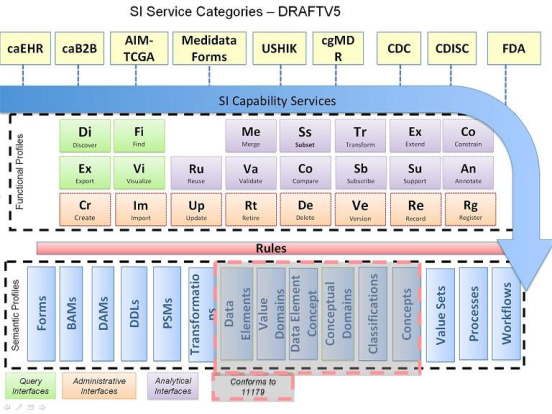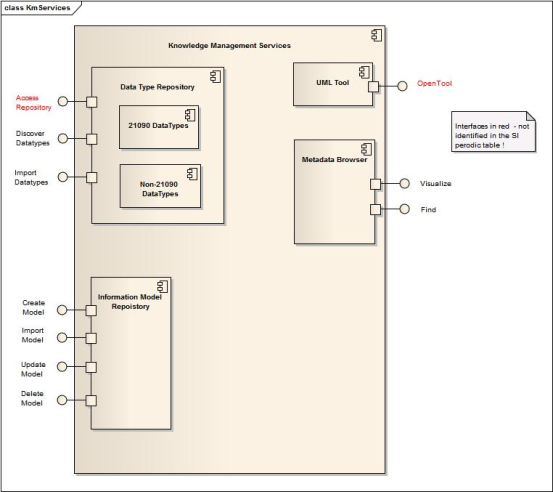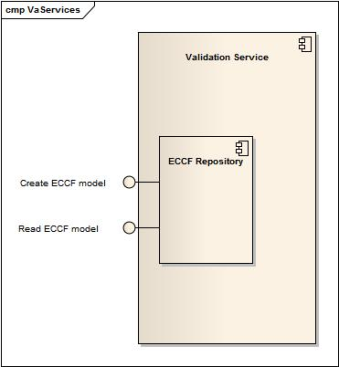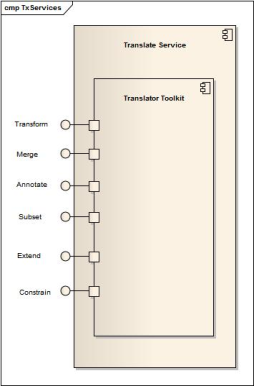UML Components and the services they provide
This section outlines initial ideas how the use cases realizations above could be linked to the technical (i.e. Semantic Infrastructure) services tentatively developed at the later stages of the Requirements Elicitation effort, and summarized in the Semantic Infrastructure Periodic Table. This table is included in Figure 9 for reference and is also available at:
https://cabig-kc.nci.nih.gov/Vocab/KC/index.php/Semantic_Infrastructure_ServicesThese technical services are included in the Functional Profile in the Periodic Table, and they will need to be invoked as part of the use case realizations.
The technical services are to be implemented by system components. Implementation responsibility is shown through the use of a UML interface in Figure 10 through Figure 12 below. Note that the services shown in red are not yet identified in the periodic table.
Note that the Semantic Infrastructure Periodic Table was developed to provide a similar way of categorizing services as was done in the context of the BIG Health Periodic Table. This table is included in Annex A for reference and is also available at:
https://cabig-kc.nci.nih.gov/Vocab/KC/index.php/Periodic_Table
The services can be positioned in terms of the following Infrastructure/Utility service categories, identified in the overall BIG Health Enterprise Services Periodic Table, namely:
- Knowledge Management services
- Validation Services
- Translation Services
The remaining of this section is structured according to these three service categories.
Figure 9: Semantic Infrastructure Periodic Table
Knowledge Management Services
Figure 10 depicts the technical services included in the Knowledge Management category. The components shown in this figure are mentioned in the use case realizations in section 3.2.1.
Note that the use of UML ports is not necessary but was included in this paper as a basis for subsequent discussion for choice of notation. An alternative approach is to connect provided interface directly to the components.
Figure 10: SI Knowledge management services used in the 21090 use case
Validation Services
Figure 11 depicts the technical services included in the Validation category.
The services are provided by an ECCF component, introduced to support future conformance and compliance activities associated with the certification of different services in the system.
Two simple SI services provided by the ECCF component are identified for reading and creating ECCF artifacts. These services can also make use of the existing (create, update etc) SI services but they are shown here explicitly to highlight the need for an ECCF component.
Note that this figure depicts an alternative notation for service (i.e. no use of UML ports).
Figure 11: Validation service and the ECCF component - used in the 21090 use case
Translation Services
The figure below depicts the Translator toolkit mentioned in the narrative use description. The component provides a number of technical services that are likely to be defined as part of the Translation Service category (see Functional profile dashed box in Figure 9).
Figure 12: Translation Services




